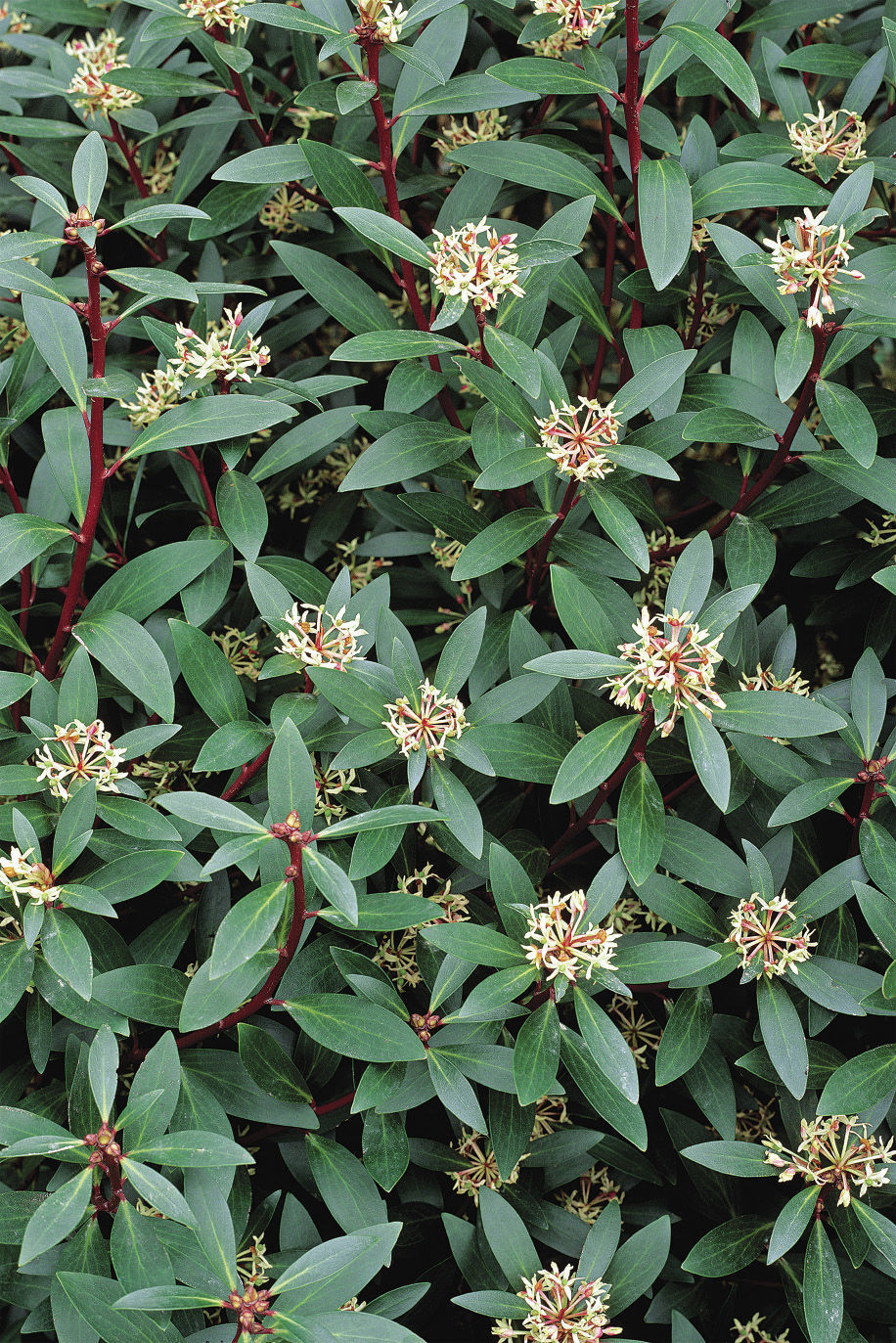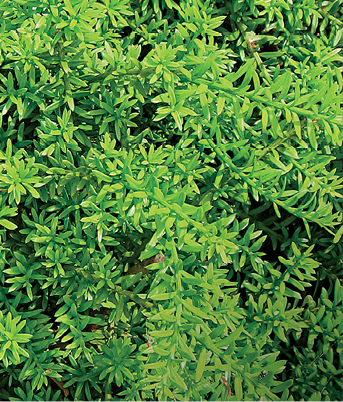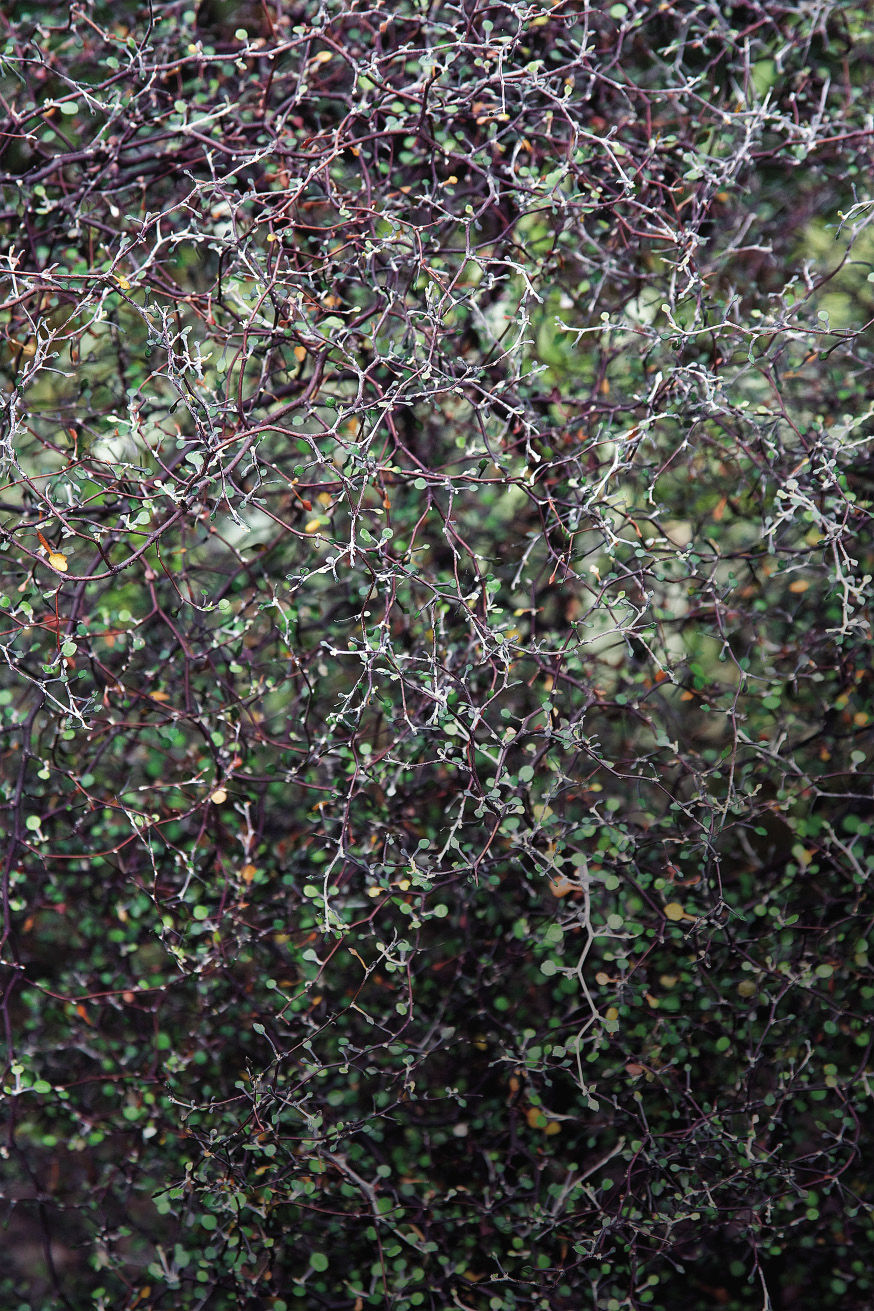1. Pepperbush

Name: Drimys lanceolata
USDA Hardiness Zones: 7 to 10
Size: 10 to 12 feet tall and wide
Conditions: Full sun to partial shade; moist, well-drained soil
Native to Australia, pepperbush is an uncommon broadleaf evergreen valued for its particularly narrow, dark green leaves and contrasting red stems. This shrub has a tidy columnar habit, which makes it a useful plant for urban landscapes. It stays especially compact and upright in sun, but I have seen it growing in considerable shade, where it remains narrow but becomes a bit lankier. This elegant and handsome shrub provides great dark texture against which brighter or bolder foliage pops. The leaves smell peppery, and the black fruit, which follow the small white flowers, resemble peppercorns.
2. Alpine Yew Pine

Name: Podocarpus nivalis
Zones: 7 to 9
Size: Up to 3 feet tall and 5 feet wide
Conditions: Full sun to partial shade; moist, well-drained soil
This useful needled evergreen shrub is a fantastic backbone plant and will put up with a lot. A prunable plant with bronzy green foliage, it can be sheared to some degree or pruned hard because it will break from old wood. Left alone, however, it has a lovely natural habit. While many other needled evergreens require full sun to perform their best, alpine yew pine will do just fine in significant shade. Under shady conditions, it will tend to be leggier and spreading. This shrub is drought tolerant, and spreading branches will root, forming a mat over time.
3. Netting Bush

Name: Corokia cotoneaster
Zones: 9 to 11
Size: Up to 4 feet tall and 3 feet wide
Conditions: Full sun; well-drained soil
Netting bush is a quirky-looking plant. It has a condensed, twiggy, overlapping branch habit; to the uninitiated, it can appear dead. Tiny round leaves in shades of green and bronze lightly pepper the black twiggy form. The shrub needs full sun and well-drained soil; in areas with cold winters, it needs a protected site. It is endemic to New Zealand, where it is used as a hedge plant. It is amenable to pruning, and could be thinned out to create an open structure over time. Netting bush is popular for container displays because of its distinctive appearance, which includes a heavy dusting of tiny star-shaped yellow flowers in spring, followed by red fruit.
4. ‘Pusch’ Norway Spruce

Name: Picea abies ‘Pusch’
Zones: 4 to 8
Size: Up to 1 foot tall and 3 feet wide
Conditions: Full sun; well-drained soil
This dwarf selection of Norway spruce functions like a ground cover. In spring, ‘Pusch’ treats us to a lovely combination of dark mature needles and lime green new growth, which is topped with immature, roselike, bright pink cones. These cones dry and brown with age, and they persist on the plant throughout the year. This dwarf conifer requires well-drained soil and prefers full sun for a dense habit, but it will tolerate some light shade, where it may thin out. ‘Pusch’ is extremely hardy and will develop cones even as a young plant.
Holly Zipp is a horticulturist at the Elisabeth Carey Miller Botanical Garden in Seattle, Washington.
Photos: (1), Geoff Kidd/gapphotos.com; (2), Meneerke bloem/courtesy of commons.wikimedia.org; (3), Lynn Keddie/gapphotos.com; (4), Richard Bloom


















Comments
Log in or create an account to post a comment.
Sign up Log in